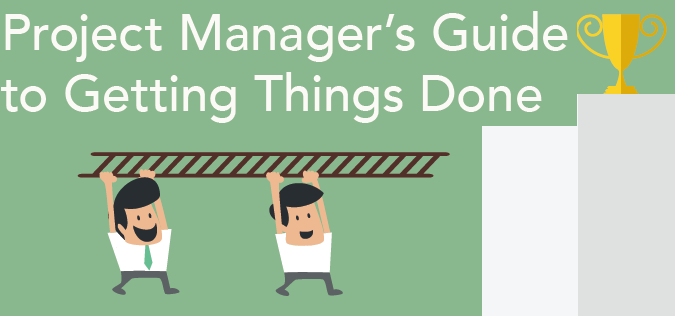
We’re thrilled so many of you joined in to learn how to effectively plan a project, distribute work and deliver on time in our live webinar “Project manager’s guide to getting things done”. We received a lot of interesting questions in the chat, but unfortunately we couldn’t answer them all during the webinar. So here’s a Q&A blog post – if you have more questions leave a comment below!
If you missed the live webinar, watch the free recorded version here.
Q: You said a short meeting should be 15 min?
A: For some it’s 5 minutes, for some it’s 20. But don’t always schedule a full hour for meetings out of habit or because your calendar suggests it by default – if an hour is scheduled, you’re likely to spend an hour.
Q: What did you mean by “fail quickly”?
A: You won’t know if what you’re planning makes any sense until you actually start doing it. If it doesn’t work, you’ve spent a lot of time planning in vain. So get started as soon as possible; if you fail you will notice quickly and will not have wasted a lot of time, you can easily regroup and try again.
Q: How do you get stakeholders to realize & resource the costs of change in products?
A: The best way to ensure buy-in from stakeholders is to be transparent and keep them involved and aware of the constraints of the project/product. This makes it easier to talk about change and the implications they will have on the resourcing and cost.
Q: How do I know when to start key activities, if I am only working with a 2-day timeframe? I must have some Gantt Chart of the project roadmap right?
A: I would recommend mapping your activities out on a Gantt chart to ensure that they are planned in the right order and to get a better overview of the time frame. This is also a great visualization of the current hypothesis. However, it is important that you don’t confuse the hypothesis with reality and realize that it can, must and should change with the new information that you get during the course of the project.
Q: How can I influence managers, who perceive work as a continuously ongoing process, to see it in an end-product structure, where work activities only take place to reach the end product (PRINCE2) ?
A: Build rapport by adapting your terminology or using the terminology in pairs. So every time we talk process we also talk product. Over time stop using the undesired terminology and keep the product one. Have close communication with these managers and get them involved in the end product and how this aligns with business value and customer value.
Q: How do I raise speed (cycle time) on the corporate agenda?
A: Time equals money. The sooner we can deliver value, the sooner we get ROI. If we focus on getting an MVP out as soon as possible we can learn faster and make a more valuable product.
Q: I’m working on improving the service process from order to delivery of products. I expect our competitors to improve in this area, which is important to the customer when selecting a vendor. How can I get buy-in from our customers for this project?
A: Always assume your competitors are improving their processes and spending time trying to deliver more value cheaper to your customers – ALL THE TIME. How do you pitch this process to your customers? I assume that improving this parameter will give your customers faster ROI from your products and make sure that they are happier with the end result. This is certainly adds value to the customer.
Q: If the stakeholders are also key contributors (management), how do I get them to see they need to spend more time on the project?
A: Tell your stakeholders that if they want the project to succeed they need to be involved. Give a rough guide of what you expect from them (15-30 minutes per week for instance) and what they get out of it – on-time delivery, control of costs, risks and progress, and being able to make informed decisions regarding the project.
Q: Since you are measuring the progress in number of cards processed, are the cards of a certain size (hours) then?
A: You can add estimated hours or use points estimation. I would recommend making the cards as small as possible – decide on a time frame within which each card must be finished. Break down cards with longer expected completion time. But generally, it doesn’t need to be exact. Just make sure cards are not diametrically different (one represents 90% of the work for instance). Estimation is inexact by nature and spending too much time on detailed estimation is also a waste.
Q: In order to specify the speed of the team the “cards” must all have the same amount of effort…is my assumption right? And if so, is this realistic?
A: See the previous question. The measuring is always subordinate to actual delivery so don’t spend too much time on making sure there a one-to-one equivalent between cards. If they are roughly the same and consistent over sprints and teams you will still have a good measure of whether you are improving or not. And that is the key value of measuring – deciding whether we are learning and getting better.
Q: How should a project manager work with the backlog? Is it set from start or do you reprioritize regularly or only when changes arrive?
A: My firm recommendation is to reprioritize regularly. You may need to do it ad-hoc if new information is supplied in between your scheduled reprioritizations, but that should be the exception. If you work scrum, you should have a reprioritization between each sprint planning for instance.

![A Global Collaborative Work Management Blueprint [Video]](https://blog.planview.com/wp-content/uploads/2019/07/A-Global-Collaborative-Work-management-blueprint.png)


